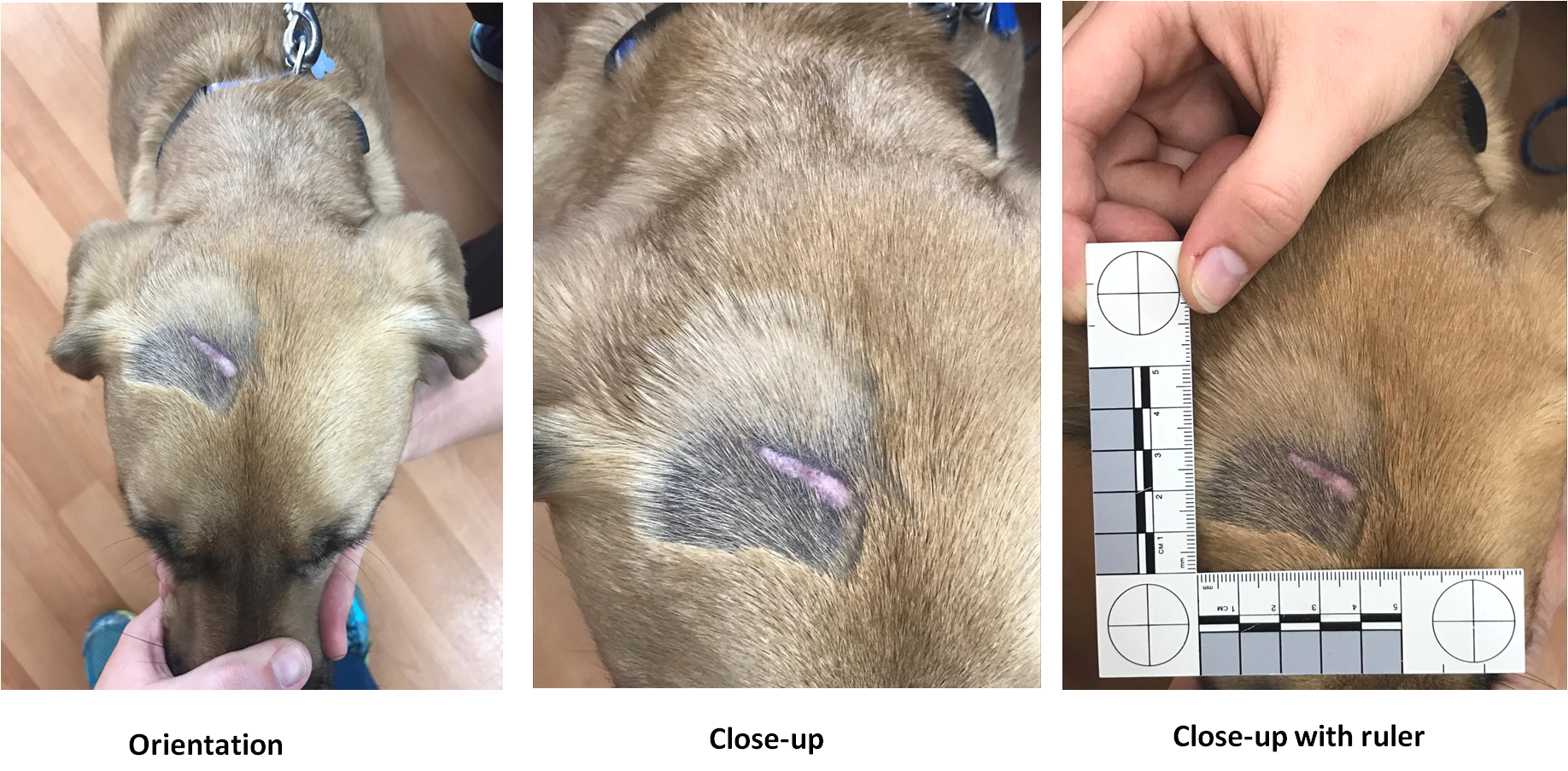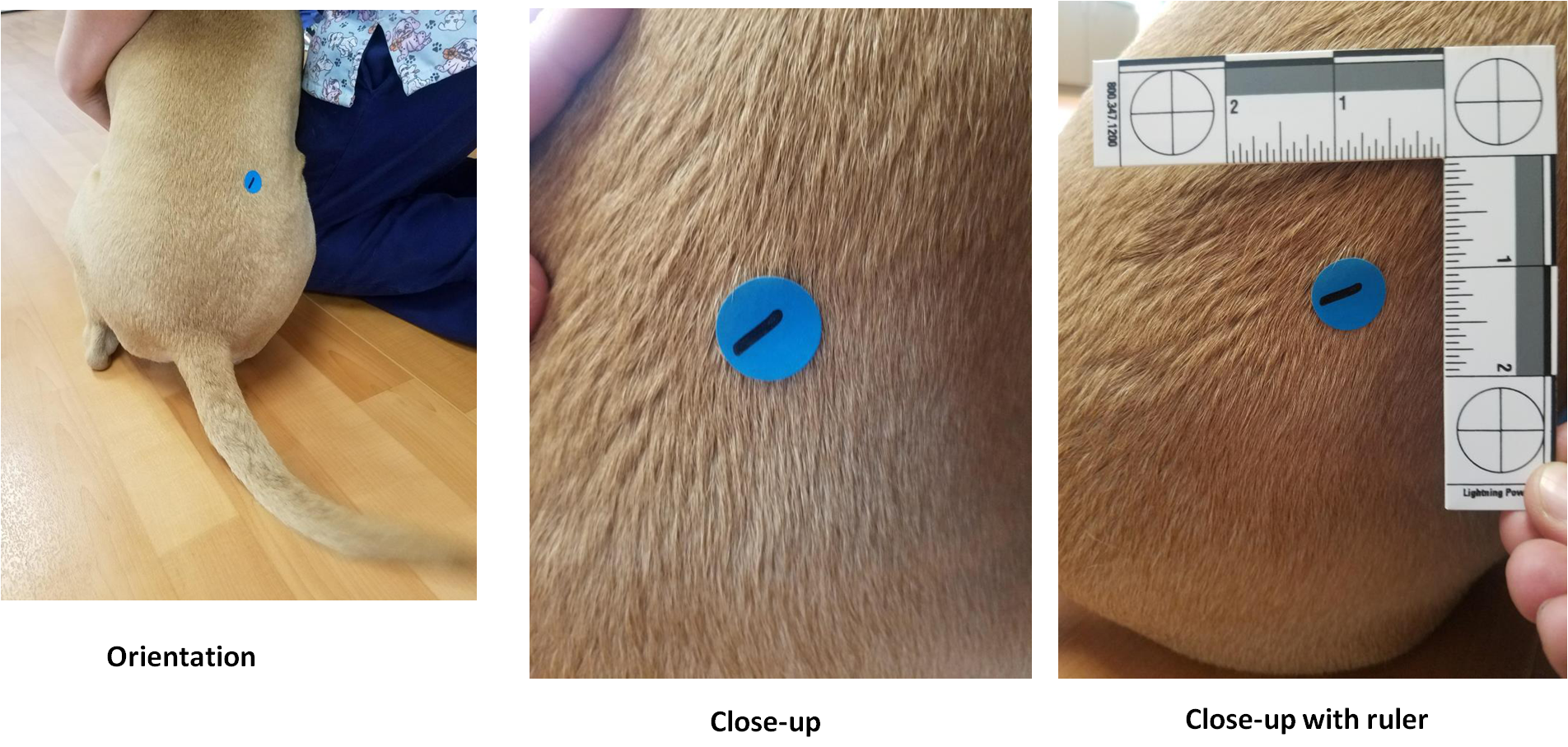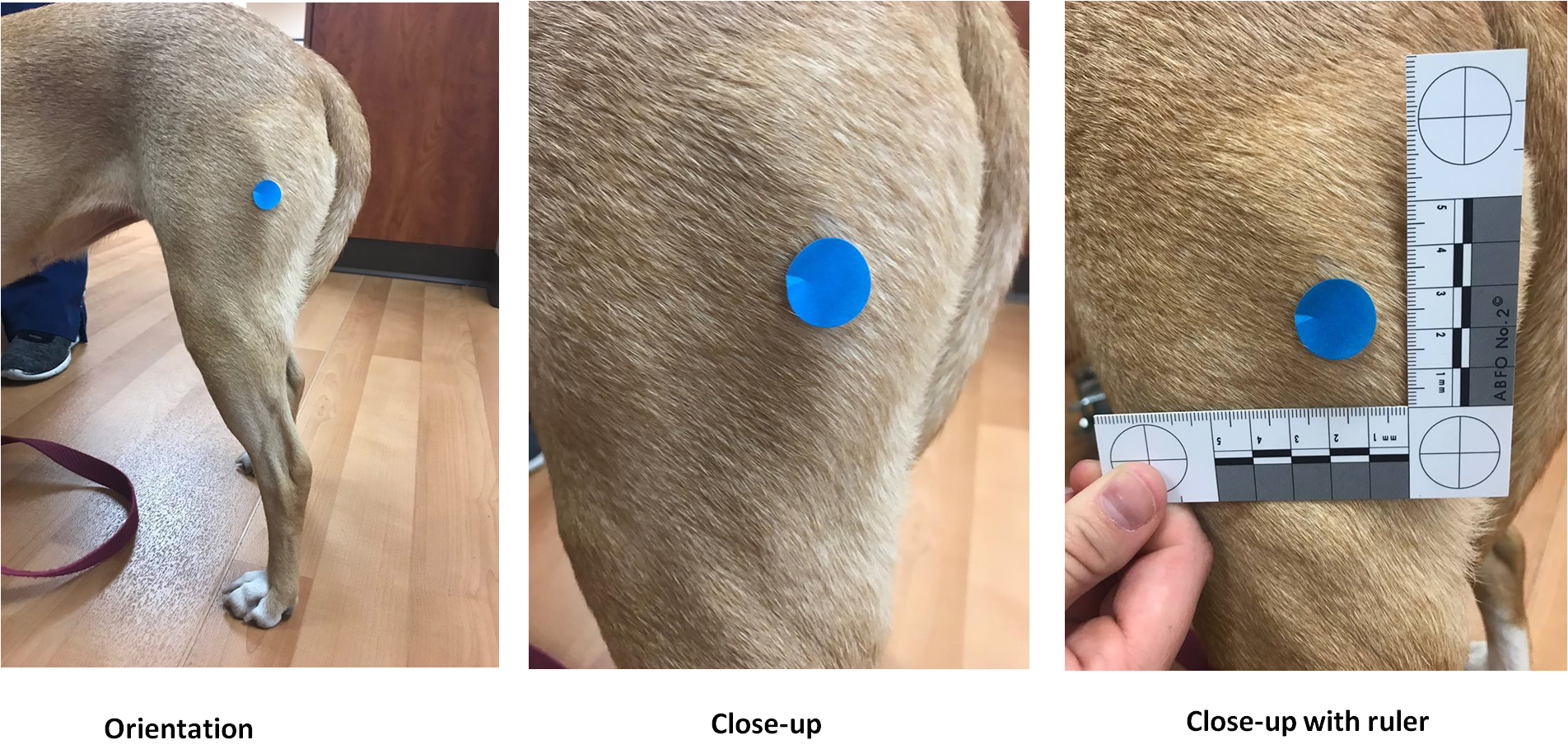Module 3: The Case of the Embedded Collar
Step 4: Orientation and Close-Up Photographs
Take photographs of all abnormal findings, injuries, wounds, lesions, and any evidence on the body following this sequence :
- Orientation photo from a distance to identify the location on the body
- Close-up photo WITHOUT a ruler to provide detail
- Close-up photo WITH a ruler to document size
Here are examples of the orientation and close-up photos. The blue sticker pictured signifies the location of an imaginary wound.




